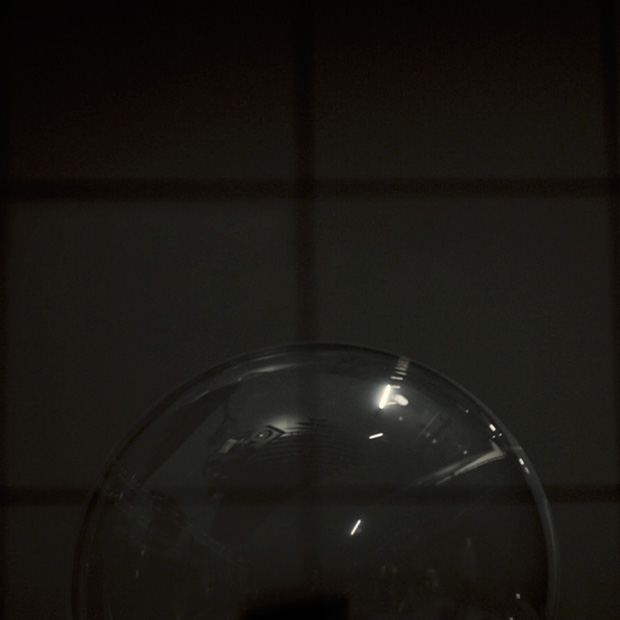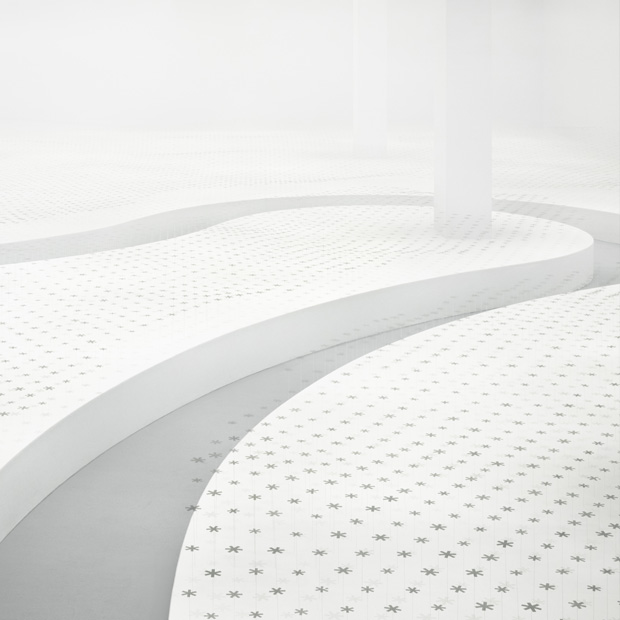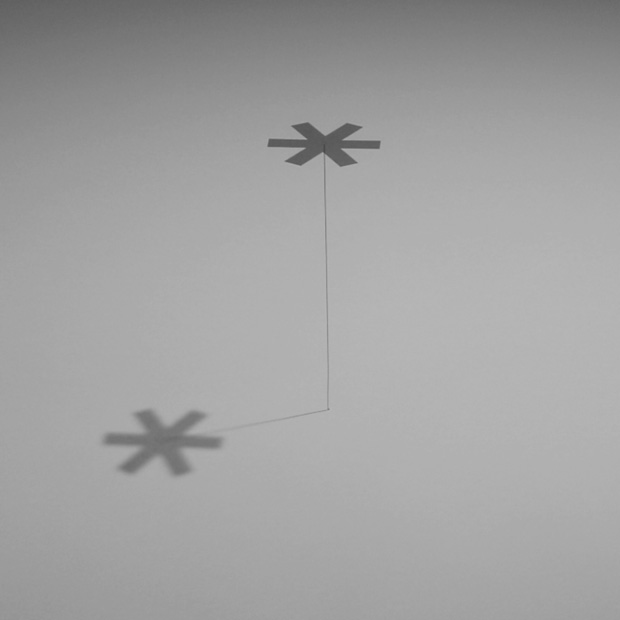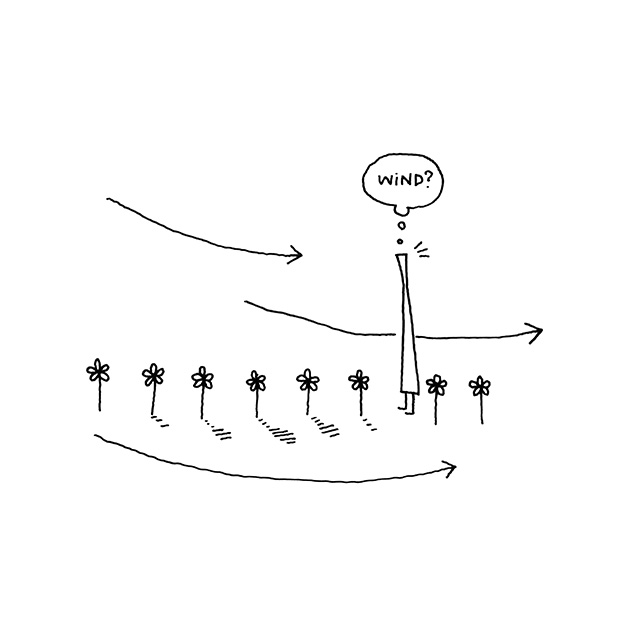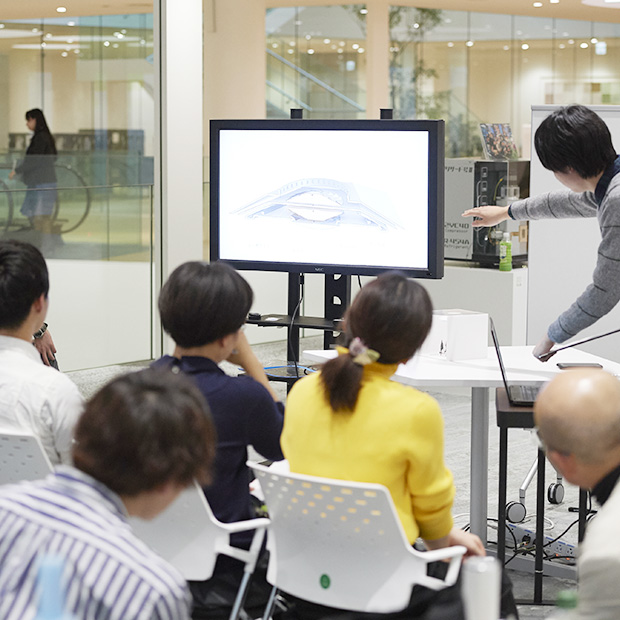Hisato Ogata from “Takram,” a design innovation firm, and Yumi Ohta, a brand designer who oversees brand design at Daikin’s Technology and Innovation Center, shared their thoughts on the exhibition that had been planned for Milan Design Week but later canceled due to the COVID-19 pandemic.
Underlying concept of awareness
Ohta:
Unfortunately, “Milan Design Week 2020” was canceled due to the COVID-19 pandemic. Having had extensive discussions together, all of us at Daikin were really looking forward to completion of the exhibition. Could you briefly explain the content that you had planned for it?
Ogata:
What you first find at the exhibition entrance is a transparent balloon floating in the air. The balloon has a message: “The amount of air you can inhale when you take a deep breath.”
That is when you first recognize the existence of “air.”
The physical experience of air gets visitors personally involved. It is a hint of what is to follow and serves as an introduction for the exhibition.
At the site there are balloons of various sizes with messages including: “The amount of air you inhale for one minute when you run,” and “The amount of CO2 in a 500ml bottle of Coke Cola.”
When you are near them, you hear the sound of a runner’s breath coming from the balloon with the message describing the amount of air inhaled while running, and the sound of the rising carbon dioxide gas from the one with the message telling the amount of CO2 in a 500ml bottle of Coke Cola.
Sound inspires you to imagine what kind of air each balloon expresses.
As you walk around the site, it suddenly becomes dark and you see messages appearing in the balloons floating in the air. They become the answers to the questions about the amount of air. While experiencing the fantastic space, you appreciate the meaning of the various amounts of air as represented by the balloons, and you wander around the exhibition with even greater curiosity.

Ohta:
The balloon floating at the entrance and the balloons of different sizes give visitors clues as to the meaning of the exhibition and helps build suspense. It truly is a composition where you can feel real excitement, isn’t it?
Ogata:
The underlying concept of this exhibition is awareness. “Air” is pronounced in the same way as the second syllable of “awareness (aw+are+ness),” so this theme is also an intentional pun. We would like people who are oblivious to air to realize its existence, appreciate its value, feel gratitude for it. In considering how to attract such people and convey our message, we thought that the experience of the space should be memorable. There are many things about air that people need to learn, but before they can learn it’s important for them to feel “air.” Having exciting experience comes first, and then learning. We proceeded with the project by sticking to this order of priority.
Devising a manner of displaying
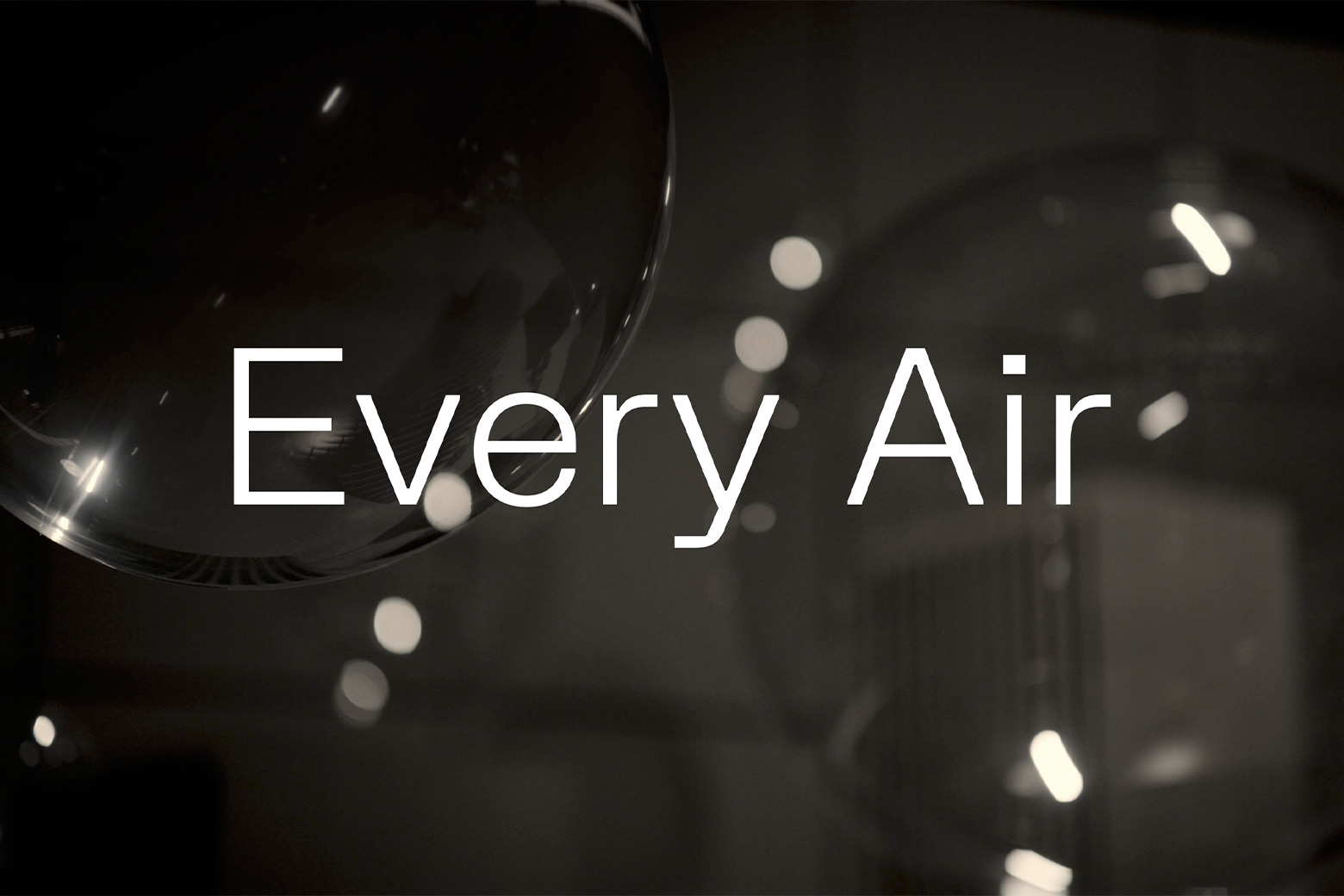
Ohta:
Could you talk about the balloons as the key items of the exhibition?
Ogata:
We started with the investigation of air to select what can be expressed in volume among the things related to air by searching the Internet and referring to science textbooks, etc. We spent much time for this. The information in which I was especially interested was that the same amount of air molecules from Julius Caesar’s last breath in the Roman era are also contained in this balloon. A huge number of molecules exist in air, all of which are dispersing all the time. Therefore, calculating based on scientific reasoning, it turns out that air molecules from his last breath are contained in this air we breathe now.
Another focal point is comparison.
The amount of air per breath when just standing is different from when running, and this can be shown using different-sized balloons. Likewise, the amount of oxygen consumed during sleep is the same as that needed to burn a candle to the bottom. We examined the amount of air consumed from various angles to find the best messages to put in the balloons.
Ohta:
Even just a breath of air becomes very impressive when it is focused on from different angles through comparison. Also, messages about the environment were put in some balloons, weren’t they?
Ogata:
Initially, there were people who said that Salone del Movile.Milano was a tradeshow, so putting excessive focus on serious issues would make visitors feel like they were listening to a sermon and lead to a loss of interest in the exhibition.
However, climate change is a serious global issue directly related to air. There is no point in delivering air-related messages that avoid environmental issues. Having decided that, it became a matter of putting such issues into proper perspective.
As for the topics of the messages, we selected the ones that participants can intuitively understand among various options ranging from something interesting to trivial things. They could see and touch air which is usually outside their awareness, and it exists right before them. We created a well-balanced exhibition plan without weighing heavily on a single topic so visitors would look at air from different angles and gain a new awareness.
Aiming to achieve pinpoint accuracy
Ohta:
The idea to let a certain amount of air out of a space in the spot using a transparent balloon was interesting too.
Ogata:
We decided using balloons to show air itself after examining various ideas, so we collected different types of balloons to test with. We felt a sense of déjà vu when lighting a translucent balloon. We tested various other methods such as painting only half of a balloon using a gradation technique, but it turned out that all the methods had already been used for installations or illuminations sometime in the past.
So, instead of trapping air in balloons, we decided on displaying thin and transparent balloons to look like air itself.
Ohta:
When looking at the balloons in the air, I really felt that they were floating there as if they were as imperceptible as air.
Ogata:
We had to tackle technical challenges in order to make the balloons float in the air.
We aimed to create a mysterious atmosphere that temporarily confuses visitors and makes them wonder how these balloons float in the air, or just have the balloons float as if being integrated into the air. Aiming to deliver the message that air exists everywhere, we needed to use such equipment as looks like a desk or other furniture for everyday use to make the balloons float in the air. We developed equipment consisting of slit-shaped boards by trial and error.
This equipment is something like a 3D version of hatching, a drawing technique used to create shading effects with spaced parallel lines. The wind created by the fan smoothly goes through the slit-shaped boards to make the balloons float in the air. We worked hard so that everybody would notice the basic concept of creating beauty while keeping functionality at a higher level. On top of that, we tested many times so that the balloons would be still in the air obliquely upward from the equipment. We didn’t want anybody to spot the trick that the balloons are kept still in the air by the wind created by the fan. We need to achieve pinpoint accuracy in order to show something that has never been done by someone else. It was so hard to set up the video recording equipment since we pursued a delicate and well-balanced installation with pinpoint accuracy this time.
Feeling gratitude for air “that is taken granted” from the COVID-19 pandemic
Ohta:
From the influence of the COVID-19 pandemic, many people have started to feel gratitude for being able to breathe without anxiety. Do you think attitudes toward air have changed since the outbreak of COVID-19?
Ogata:
I think it has dramatically changed. Social distancing means keeping a safe space between yourself and other people, so it cannot be practiced without being aware of air. This applies to wearing a mask too. People in the world have come to pay attention to air on a daily basis. It seems that their sense of value has turned one-hundred and eighty degrees.
We received the offer before the pandemic, and we wanted to create an awareness of air since people were oblivious of it at that time.
That’s why we put the slightly terrifying message: “Nobody can live longer than five minutes without breathing” under the balloon saying “The amount of air you breathe out when you take a deep breath” at the entrance.
We wanted to startle participants a bit with this message to make them think, “Yeah, that’s right.” However, we are now in such a terrifying situation unfortunately. Specifically speaking, Italy, the country where Salone del Movile.Milano is held, went through the first phase of the pandemic due to a rapid increase in the number of infected patients.
It is the case that the world is now in such a predicament, and people in every corner of the globe no longer regard breathing without anxiety as something that they can take for granted, and actually come to consider air as something invaluable. This may be because the message that we wanted to deliver unexpectedly reached people in the world due to the COVID-19 pandemic.
The slogan “I can’t breathe” is also used as an icon of racism in the “Black Lives Matter” movement which calls for eliminating systematic violence and racism against black people. I was just thinking of communicating the importance of air and being able to breathe without anxiety at that time; therefore, I felt something paranormal like being indirectly connected to that movement when I knew such a slogan was symbolically used.
Ohta:
Daikin strives to make people’s lives affluent by providing good air every day. As part of such efforts, we would like to communicate to people how interesting and amazing air is. However, it seems that people take air as something scary or terrifying due to the COVID-19 pandemic. As a company handling air, we strongly hope to deliver the message that there is no need to be afraid of air. We would like to get the safety of air known to people.
Ogata:
I genuinely feel empathy for what you say. Unfortunately, the exhibition was cancelled, and it’s a really shame that what we prepared will never be publicly disclosed. I feel disappointed at the fact that the time and energy we invested to create such interesting exhibits were wasted, but I would like to keep the video for good to publicize the messages that are contained in them.
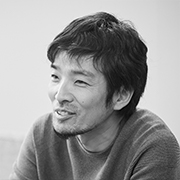
Main projects include “Hakuto,” a lunar exploration rover (design concept development and styling), “The Mimicries,” an NHK Educational TV program (art direction), the “On The Fly,” an interface integrating print and digital media (system development), the “21_21 DESIGN SIGHT Exhibition “Athlete” (project management).
He has won numerous prizes including the German iF Design Award (2005), and Jury Selection Award, an award given to an outstanding work selected by the Jury at the Japan Media Arts Festival (2012). He has served as a Good Design Award judge since 2015.







